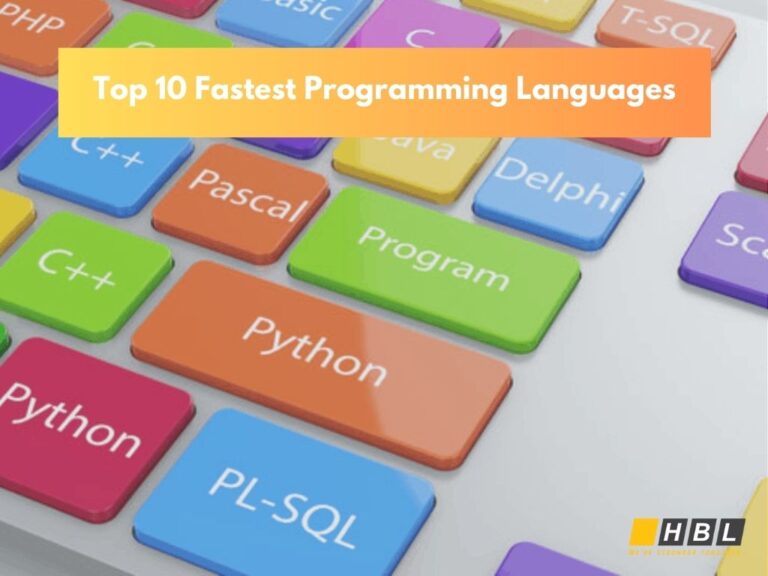Cloud computing has transformed the way technology is accessed and utilized by both businesses and individuals. It provides scalable, flexible, and cost-effective solutions that eliminate the need for heavy investments in physical infrastructure. However, not all cloud computing services are created equal, and there is a significant distinction between enterprise cloud computing and standard cloud computing. Let’s delve into the definitions of both, followed by a detailed comparison to understand their unique characteristics and use cases.
What is Standard Cloud Computing?
Standard cloud computing refers to cloud services designed to cater to a wide range of users, from individuals to small and medium-sized businesses. It typically involves public cloud platforms, such as Amazon Web Services (AWS), Google Cloud Platform (GCP), or Microsoft Azure, that provide on-demand access to shared resources like storage, computing power, and applications.
The primary appeal of standard cloud computing lies in its accessibility and affordability. Users can easily subscribe to these services and pay only for the resources they use, making it an excellent choice for smaller organizations or individuals who lack significant IT infrastructure. Standard cloud services often emphasize scalability, allowing users to increase or decrease their resource usage based on immediate needs.
Key Features of Standard Cloud Computing:
- Public Access: Resources are distributed among numerous users, offering a budget-friendly approach.
- Scalability: Users can scale resources up or down depending on demand.
- Low Entry Cost: It eliminates the need for significant upfront investment in hardware.
- Ease of Use: Most platforms offer user-friendly interfaces with quick setup processes.
What is Enterprise Cloud Computing?
Enterprise cloud computing is designed specifically for large organizations with complex IT requirements. It offers advanced solutions that combine scalability with a heightened focus on security, compliance, and customization. While enterprise cloud services may utilize public, private, or hybrid cloud models, they are tailored to meet the unique operational and regulatory needs of businesses.

Enterprise cloud solutions integrate seamlessly with existing IT infrastructures, offering greater control over sensitive data and mission-critical workloads. These services prioritize reliability and performance, ensuring that businesses can operate without interruptions. Moreover, enterprise cloud computing often includes tools for managing large-scale deployments, advanced analytics, and robust disaster recovery systems.
Key Features of Enterprise Cloud Computing:
- Customizability: Solutions are tailored to meet the specific needs of the organization.
- Enhanced Security: Integrated advanced measures, such as encryption and compliance tools, ensure robust protection.
- Integration: Seamlessly integrates with existing on-premises IT systems.
- Support for Hybrid Models: Combines public and private cloud environments for greater flexibility.
- Scalability at Scale: Designed to handle large-scale operations with high reliability.
Key Differences Between Enterprise Cloud Computing and Standard Cloud Computing
1. Target Audience
- Standard Cloud Computing: Aimed at individuals, startups, and small to medium-sized businesses. It is ideal for users who need basic cloud services without extensive customization or control.
- Enterprise Cloud Computing: Geared towards large organizations with complex IT needs. It focuses on delivering enterprise-grade performance, reliability, and compliance.
2. Security and Compliance
- Standard Cloud Computing: Offers basic security measures suitable for general use. It may not meet the stringent regulatory requirements of industries like healthcare or finance.
- Enterprise Cloud Computing: Provides advanced security features, including encryption, identity management, and adherence to industry-specific compliance standards such as GDPR, HIPAA, or ISO certifications.

3. Customization and Control
- Standard Cloud Computing: Limited customization options, as services are generally designed to be one-size-fits-all.
- Enterprise Cloud Computing: Highly customizable to align with the unique needs of the organization. Businesses can configure workflows, integrate with proprietary tools, and adapt the cloud environment to their operational goals.
4. Cost Structure
- Standard Cloud Computing: Operates on a pay-as-you-go model, making it cost-effective for users with modest resource demands. The pricing is predictable and straightforward.
- Enterprise Cloud Computing: While more expensive, it delivers value through advanced features and scalability. Costs are often justified by the level of control, reliability, and support provided.
5. Scalability
- Standard Cloud Computing: Scalability is available but is often limited by the shared nature of public cloud resources.
- Enterprise Cloud Computing: Designed to handle large-scale operations, enterprise solutions can scale without compromising performance or reliability.
6. Integration with Existing Systems
- Standard Cloud Computing: Integration capabilities are often limited, as these services are built for general use.
- Enterprise Cloud Computing: Offers extensive integration options, enabling businesses to connect the cloud with existing on-premises IT systems seamlessly.
7. Support and Service Level Agreements (SLAs)
- Standard Cloud Computing: Basic customer support is usually available, but response times and service guarantees may be limited.
- Enterprise Cloud Computing: Comes with robust SLAs, ensuring high levels of uptime, quick response times, and dedicated customer support.
8. Deployment Models
- Standard Cloud Computing: Primarily relies on public cloud models.
- Enterprise Cloud Computing: Supports hybrid and private cloud configurations, offering businesses greater flexibility and control.
Advantages of enterprise cloud computing
Enterprise cloud computing ensures enhanced security, reliable performance, and seamless scalability, making it ideal for businesses with complex needs. It offers tailored solutions, integrates with existing systems, and supports innovation through advanced analytics. Though costs may be higher upfront, it optimizes long-term expenses and fosters global collaboration, making it a strategic choice for staying competitive.
Categories of Enterprise Cloud Computing Services
Enterprise cloud computing encompasses various service models tailored to meet diverse business needs. These models include Public Cloud, Private Cloud, Hybrid Cloud, and Multi-Cloud, each serving distinct purposes.
1. Public Cloud
Public cloud services, managed by third-party vendors, are accessible to multiple organizations via the internet. Some examples are Microsoft Azure, Google Cloud, and Amazon Web Services (AWS). Businesses benefit from cost-effective scalability and pay-as-you-go pricing. Public clouds are ideal for non-sensitive tasks like app development and collaboration tools but may lack the control and customization found in private solutions.

2. Private Cloud
Private cloud services are dedicated to a single organization, offering greater security, control, and customization. They can be hosted on-premises or by external providers. Private clouds are suitable for industries with stringent compliance needs, such as healthcare and finance. While offering robust performance and data protection, they often come with higher costs due to dedicated resources.
3. Hybrid Cloud
Private cloud services are dedicated to a single organization, offering greater security, control, and customization. They can be hosted on-premises or by external providers. Private clouds are suitable for industries with stringent compliance needs, such as healthcare and finance. While offering robust performance and data protection, they often come with higher costs due to dedicated resources.
4. Multi-Cloud
Private cloud services are dedicated to a single organization, offering greater security, control, and customization. They can be hosted on-premises or by external providers. Private clouds are suitable for industries with stringent compliance needs, such as healthcare and finance. While offering robust performance and data protection, they often come with higher costs due to dedicated resources.
Types of enterprise cloud computing service models
Enterprise cloud computing service models offer different levels of cloud service, depending on the needs of businesses. Here’s an overview of each:
Infrastructure as a service (IaaS)
IaaS provides businesses with essential infrastructure resources like servers, storage, and networking hardware, which they can use on-demand. Instead of maintaining physical hardware, companies rent infrastructure from a cloud provider. It offers the flexibility to scale resources based on demand and helps businesses avoid the costs and complexities associated with owning and maintaining physical infrastructure.
Platform as a service (PaaS)
PaaS provides businesses with a platform and tools for developing, running, and managing applications without dealing with underlying infrastructure or software updates. It offers a ready-to-use environment with services like database management, application hosting, and development tools. PaaS is particularly useful for developers looking to focus on building applications without managing the hardware or software layers.

Software as a service (SaaS)
SaaS delivers fully functional software applications via the cloud, where users access them over the internet, often through a subscription model. This eliminates the need for businesses to install, manage, or maintain software on local systems. SaaS is typically used for applications like email, customer relationship management (CRM), or enterprise resource planning (ERP).
Challenges of enterprise cloud computing
As organizations continue to adopt cloud computing for its flexibility, scalability, and cost-efficiency, there are several challenges that enterprises must navigate to fully leverage its potential. These challenges often revolve around security, compliance, integration, and cost management. Understanding and addressing these issues is essential for a smooth transition to and sustained use of cloud technologies.
- Security and Data Privacy
One of the primary concerns in enterprise cloud computing is the security of data. Storing sensitive information on third-party servers opens the door to potential vulnerabilities, including data breaches, hacking, and unauthorized access. Enterprises must ensure that their cloud providers offer robust security measures such as encryption, multi-factor authentication, and comprehensive access control mechanisms. Additionally, the shared responsibility model of cloud computing means that both the cloud provider and the enterprise have specific security obligations. Ensuring secure data transmission, storage, and backup in the cloud is paramount to protect valuable business information.
- Compliance and Regulatory Issues
Compliance with industry regulations and data protection laws is another significant challenge. Different regions have varying legal requirements for data storage and privacy. For instance, the European Union’s General Data Protection Regulation (GDPR) imposes strict rules on how organizations handle personal data, and similar regulations exist globally. Enterprises using cloud services must ensure that their cloud providers comply with these regulations, as failure to meet compliance standards can result in substantial fines and reputational damage. The complexity of managing compliance across different jurisdictions further complicates this issue.
- Integration with Legacy Systems
For many enterprises, moving to the cloud doesn’t mean starting from scratch. Organizations often have existing legacy systems that are deeply embedded in their operations. Integrating these systems with cloud-based services can be complex and time-consuming. Compatibility issues, data migration challenges, and potential downtime during the integration process can hinder the adoption of cloud computing. Organizations must have a clear strategy for gradually transitioning their legacy infrastructure while ensuring minimal disruption to business operations.
- Vendor Lock-In and Multi-Cloud Strategies
Vendor lock-in is a concern when organizations become overly reliant on a single cloud provider’s tools, infrastructure, and services. This dependency can make it difficult to switch providers or adopt multi-cloud strategies in the future. Businesses may find themselves constrained by a particular vendor’s pricing model, features, or limitations, which can affect flexibility and innovation. To mitigate this risk, enterprises often pursue multi-cloud or hybrid-cloud strategies, using services from multiple providers. However, managing a multi-cloud environment introduces its own challenges, including increased complexity in monitoring, integration, and cost control.
- Cost Management and Optimization
While cloud computing can provide cost savings, improper management of cloud resources can lead to unexpected expenses. Enterprises often struggle with the dynamic nature of cloud pricing, where costs can fluctuate based on resource usage, storage needs, or network bandwidth. Without careful monitoring, organizations may find themselves spending more than anticipated. Additionally, businesses may overspend on unused resources or fail to take advantage of cost-saving opportunities, such as reserved instances or auto-scaling. Developing a strategy for cloud cost management and implementing tools to track usage and optimize expenses is crucial for preventing cost overruns.
- Downtime and Service Reliability
Although cloud providers offer high uptime guarantees, no system is entirely immune to outages. Downtime, whether due to technical failures, maintenance, or external factors, can disrupt business operations, leading to loss of productivity and revenue. Enterprises must ensure they have disaster recovery plans in place and evaluate the service-level agreements (SLAs) of cloud providers to understand the level of reliability they can expect. Choosing providers with a proven track record for uptime and robust disaster recovery features can help mitigate this risk.
- Skill Shortages and Talent Acquisition
The increasing reliance on cloud computing also creates a need for skilled professionals who understand cloud technologies, architecture, security, and management. However, there is a shortage of cloud experts in the job market. Organizations must invest in training existing staff or hiring new talent to manage their cloud infrastructure effectively. The lack of skilled personnel can delay cloud adoption and hinder the optimal use of cloud services.
Implementation of enterprise cloud computing
The following are key trends that are expected to define the future of enterprise cloud computing.
1. Multi-Cloud and Hybrid Cloud Adoption
Enterprises are increasingly embracing multi-cloud and hybrid cloud strategies to maximize flexibility and minimize risks. By leveraging multiple cloud providers or combining private and public cloud environments, organizations can avoid vendor lock-in and customize solutions to meet their unique needs. This approach also enables businesses to distribute workloads efficiently and enhance disaster recovery capabilities.
2. Edge Computing Integration
The rise of edge computing is transforming how enterprises process and analyze data. By bringing computation and storage closer to the data source, edge computing reduces latency and supports real-time decision-making. This is particularly beneficial for industries like manufacturing, healthcare, and retail, where immediate insights are critical. Cloud providers are integrating edge solutions into their offerings to cater to these demands.
3. AI and Machine Learning in the Cloud
Cloud platforms are increasingly incorporating artificial intelligence (AI) and machine learning (ML) capabilities to enhance enterprise operations. Businesses can use AI-powered tools for predictive analytics, automated decision-making, and customer experience optimization. These technologies enable organizations to process massive datasets efficiently and gain actionable insights, driving innovation and competitiveness.
4. Serverless Computing
Serverless computing is gaining traction as a cost-effective and scalable model for application development. By allowing developers to focus on building applications without managing underlying infrastructure, serverless computing accelerates development cycles and reduces operational overhead. Enterprises are adopting this model to improve agility and streamline operations.
5. Enhanced Security and Compliance
As cloud adoption grows, so does the emphasis on security and compliance. Enterprises are prioritizing robust cybersecurity measures, including advanced encryption, zero-trust architecture, and automated threat detection. Additionally, cloud providers are offering industry-specific compliance tools to help businesses meet regulatory requirements, especially in highly regulated sectors like finance and healthcare.
6. Sustainability in Cloud Computing
Environmental sustainability is becoming a significant consideration for enterprises and cloud providers. Cloud platforms are adopting green technologies, such as energy-efficient data centers and renewable energy sources, to reduce their carbon footprints. Businesses are also evaluating cloud providers based on their sustainability practices, aligning technology decisions with corporate social responsibility goals.
7. Quantum Computing on the Horizon
While still in its early stages, quantum computing is expected to make waves in the cloud industry. Cloud providers are investing in quantum computing research and offering early access to quantum processing power. This innovation holds the potential to solve complex problems in fields such as cryptography, materials science, and optimization, providing a competitive edge for forward-thinking enterprises.
8. Industry-Specific Cloud Solutions
Cloud providers are tailoring their services to meet the unique demands of different industries. From healthcare-focused platforms offering HIPAA-compliant solutions to financial clouds with enhanced risk management tools, industry-specific cloud solutions are becoming a key differentiator. These customized services help enterprises address niche challenges effectively and accelerate digital transformation.
Conclusion
The future of enterprise cloud computing is defined by innovation, agility, and strategic adaptability. Businesses that stay ahead of these trends can harness the transformative power of cloud technologies to optimize operations, drive growth, and remain competitive in an ever-changing digital landscape. As cloud computing evolves, enterprises must proactively embrace these advancements to secure their place in the future of business.
Read more:
Onshore vs. Offshore Software Development: Key Differences and Factors to Consider




